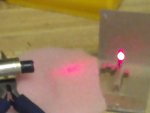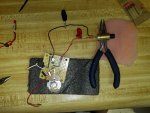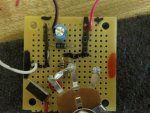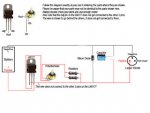So I have been reading , copying and pasting for months now. I built my 1st driver lastnite ....It seems like my laser should be a bit brighter. I cant get it to light a match ? Is it my lens, is it my driver? If I were to remove 1 of my 10ohm resistors would that give it a boost in power? I'm a noob so please be gentle.
( Lighting matches is not my final goal. I thought that it would be a good way to see if I'm getting towards my ultimate goal. which by the way would be lighting a fire on the moon with my handheld from my porch)
http://laserpointerforums.com/attachment.php?attachmentid=37500&stc=1&d=1333999714
http://laserpointerforums.com/attachment.php?attachmentid=37499&stc=1&d=1333999714
http://laserpointerforums.com/attachment.php?attachmentid=37498&stc=1&d=1333999714
http://laserpointerforums.com/attachment.php?attachmentid=37497&stc=1&d=1333999714
( Lighting matches is not my final goal. I thought that it would be a good way to see if I'm getting towards my ultimate goal. which by the way would be lighting a fire on the moon with my handheld from my porch)
http://laserpointerforums.com/attachment.php?attachmentid=37500&stc=1&d=1333999714
http://laserpointerforums.com/attachment.php?attachmentid=37499&stc=1&d=1333999714
http://laserpointerforums.com/attachment.php?attachmentid=37498&stc=1&d=1333999714
http://laserpointerforums.com/attachment.php?attachmentid=37497&stc=1&d=1333999714
Attachments
Last edited:









